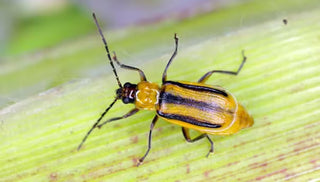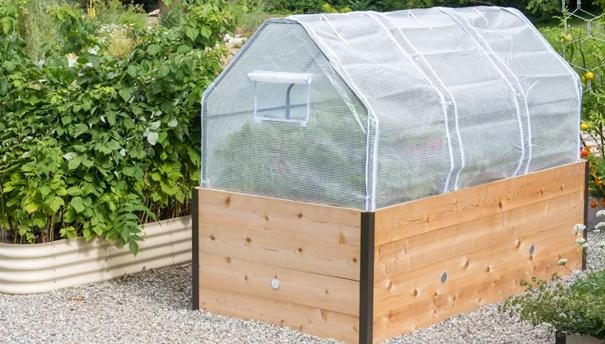Stunted, yellow cornstalks that are prone to toppling over are the most serious damage caused by corn rootworms.
These beetle larvae are 1/2?3/4″ white grubs that tunnel into the roots of corn plants to feed.
Adult beetles also feed on corn silks, pollen, tassels, and occasionally, leaves. One type of rootworm beetle may target the flowers and leaves of squash-family plants and beans as well, especially in late summer. Corn rootworms are most likely to be a problem in gardens where corn has grown for two seasons or more.
There are three different species of this pest:
- The northern corn rootworm beetle is greenish-yellow and about 1/4″ long; it is a pest in the upper Midwest.
- The southern corn rootworm is also known as the spotted cucumber beetle. This beetle is green with black spots or stripes and is common east of the Rockies.
- Western corn rootworm beetles are tan with black stripes; they are active in the same range as the southern corn rootworm.
Prevention and Control
- If space permits, grow corn in a different location every year.
- Encourage natural predators such as birds, ground beetles, and tachinid flies.
- Cover beans, squash, and other susceptible crops with garden fabric to prevent southern corn rootworm beetles from feeding.
- Clean up the garden in fall to give southern corn rootworm beetles fewer places to hide during the winter; cultivate areas where corn grew to kill eggs and larvae of northern and western corn rootworms.




